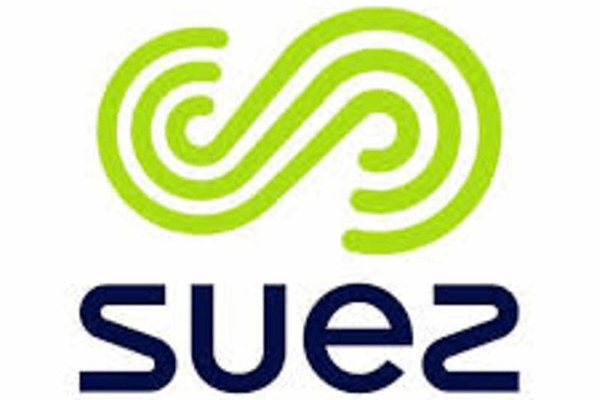Public Hearing Remains Open On Application
By Tina Traster
The ongoing controversy over Suez’s application to relocate to Tilcon’s former West Nyack headquarters boils down to whether or not the Clarktown Town Planning Board believes the town engineer and other professionals have done an adequate job in assessing potential environmental impacts to the site.
For months, residents have been urging planning board members to take the process further and require a full environmental review while Suez has argued its project has been adequately vetted and it’s time to move forward.
Struggling with the issue – which pits a corporate entity that wants to remain on schedule to move into a new location with a passionate citizenry that will not be satisfied until a full environmental impact statement under SEQR (New York State’s Environmental Quality Review Act) is triggered – the planning board finally put the issue to a vote Wednesday night, and deadlocked. At the oft-time chaotic hearing, a motion for a “negative declaration” which would have meant Suez could have moved forward unimpeded, but not reach a vote. But then the board reversed the approach and voted on a “positive declaration,” which would have called for a SEQR review. The vote split 3-to-3, with Edward J. Guardaro Jr., Peter Streitman and Phillip DeGaetano voting in favor of the SEQR review, while Rudolph Yacyshyn, Edward Bertolino and Douglas Katz voted against.
Following the tie, Yacyshyn said the board needed its seventh member, Chairman Gilbert Heim to vote. Heim was absent from the hearing but was seen immediately after the hearing ended in the chamber.
Asked why he was not present for the hearing, Heim said, “I had a conflict of interest in my schedule.”
Public hearing on the application was continued to a yet-to-be named date.
Both residents and the applicants share one thing in common: they are both tired of the protracted debate over this application. Suez, which has repeatedly said it has an “as of right” plan to move its headquarters to 162 Old Mill Road, insists the town has reviewed the “Environmental Assessment Form” the applicant has submitted and town engineers have reviewed, and the project should be green-lighted.
Suez, after bowing to pressure, updated its application by removing fuel tanks, submitting a list of vehicles to be used the site, and explaining it was too costly to switch from diesel to natural gas for an on-site generator.
Residents on the other hand, who are concerned about potential environmental impact on the reservoir, Rockland’s primary drinking source, continue to call for a SEQR review, which would delve deeper into the study of potential environmental impact, and may derive at alternative solutions for the project that could mitigate potential harm.
At least two citizens with legal training challenged Suez attorney Lino Sciarretta’s mandate of the planning board’s duties. Based on a letter Sciarretta submitted to the board on June 11th, he said the planning board must conduct an evaluation, based on the EAF form, and make a positive or negative declaration on whether the proposed action will have a significant effect on the environment.
The misleading word, two attorneys said, is “will.”
“‘May’ is all that is required,” said Environmental Attorney Susan Shapiro. “The applicant has altered the standard from “may” to “will.” She pointed out that there is no need for a specific determination of a significant adverse impact, only that there is a threat of one.
“This is a very big decision,” said Shapiro. “You’re handicapping yourselves and the public.”
Emotions ran high at the hearing with citizens questioning the planning board’s ability to do it duty to promote the health, safety and welfare of the residents of Clarkstown and the county at large.
“You are sworn to protect the public,” said Laurie Seeman, a Clarkstown resident. “That’s your job. We’re asking you to do your job. A SEQR review will get to the proper conclusion. If you don’t do a SEQR, it will haunt you.”
Angry residents reiterated concerns over deforestation of land that currently absorbs run-off into Lake DeForest, paving of 60,000 square feet of impermeable surface (larger than a professional football field), and runoff of substances including oil, gasoline, carbon black and other pollutants from the new parking surface into the reservoir.
“Take a hard look,” said Shapiro, an environmental attorney. “If Suez had voluntarily done a SEQR review or the board had already ordered it, we would be moving forward.”
Though he listened intently to Shapiro’s legal interpretation of why SEQR is mandatory, Yacyshyn said repeatedly “We rely on our professionals. I resent being told we are not doing our job.”
No other planning board members weighed in during the hearing until votes were called on making a negative or positive declaration on SEQR.
Residents argued that requiring SEQR could lead to new ideas to mitigate harm. For example, relocating the parking lot, using a permeable surface for the parking area, using clean energy for its generator, to name a few.
Residents were particularly distraught over clearcutting that is underway at the site now based on a permit for a new sewer system.
“This seems to be a lot of leveling beyond the scope of a sewer site,” said resident Lynn Munroe. “More than 100 feet has been leveled up to Old Mill Road. The buffer is gone. It needs to be put back.”
The board was satisfied that Suez’s permit to install a sewer line necessitated the cutting of hundreds of trees.









